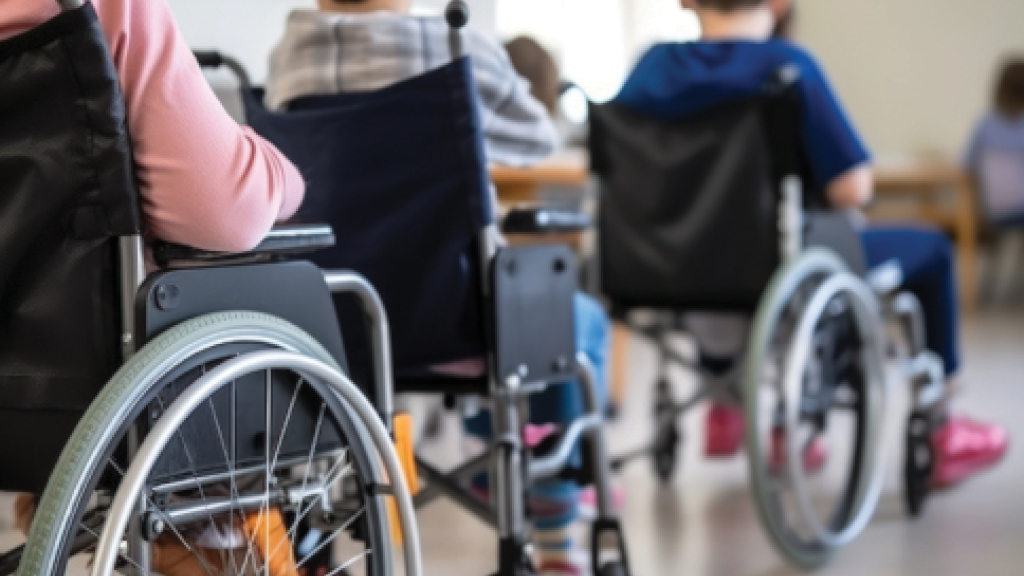
POTER/STOCK.ADOBE.COM
Emergency preparedness is a crucial aspect of ensuring the safety and well-being of all students, including those with disabilities. These students present with unique needs and challenges that require specific attention in emergency planning.
Students with disability-based supports are a diverse group of individuals with a wide range of specific needs. This includes students with physical disabilities, sensory impairments, cognitive limitations, or emotional and behavioral disorders. It is essential to understand and plan for the often-complex needs of these students. Specific considerations include:
Communication barriers: Many students with disabilities have communication difficulties, making it challenging for students to understand and follow instructions during an emergency. Some rely on assistive communication devices or sign language.
Mobility issues: Students with physical disabilities may require mobility aids like wheelchairs or walkers, and evacuation plans must accommodate such needs.
Sensory disabilities: Students with sensory processing disorders may be overwhelmed by sirens, alarms, or bright lights during an emergency, leading to greater confusion.
Medication and medical equipment: Some students rely on medication or medical equipment in school. An effective emergency plan must include provisions that address these.
Emotional and behavioral challenges: Students with emotional or behavioral disorders may react differently during crises, requiring trained staff to manage their unique responses.
To better ensure the safety and empowerment of students with disabilities, schools must develop comprehensive and inclusive emergency plans. Some key components of such plans include:
Individualized emergency plans: Each student with a disability should have an individualized emergency plan tailored to their specific needs developed in collaboration with parents, caregivers, and specialists. These plans can be stand-alone documents referenced in the student’s Individualized Education Program (IEP).
Clear communication strategies: Personnel should be trained in effective communication strategies that consider each student’s unique needs. Visual supports, tactile cues, and simplified language can aid in conveying crucial information during a crisis.
Specialized training: Staff members should receive specialized training on assisting students with disabilities during emergencies.
Accessible facilities: School facilities must be accessible to all students, including those with mobility challenges. This includes ramps, elevators, and accessible restrooms. Plans should include contingencies for loss of power, multiple exit routes, and visual obstructions.
Sensory considerations: Sensory overload can be minimized by providing sensory-friendly spaces, ear protection, or sunglasses.
Medication and medical equipment: Establish protocols for the safe storage and administration of medication. Emergency generators that power essential medical equipment also should be considered.
Evacuation plans: Evacuation plans must account for the diverse needs of students with disabilities. Assign trained staff to assist with evacuations, especially for students with mobility, communication, and sensory needs.
Reunification protocols: Establish clear procedures for reuniting students with disabilities with their families or caregivers after an emergency. Consider prioritizing the reunification of students with disabilities, and then reallocating staff to assist with the reunification of the larger student population.
Empowerment is a vital aspect of emergency preparedness for all students but especially for those with disabilities. This involves fostering independence and self-confidence in anticipation of a crisis. Practices that can help empower students with disabilities include:
Self-advocacy skills: Instruction in basic self-advocacy skills, such as communicating needs and understanding individualized emergency plans.
Personalized preparedness kits: Work with parents and caregivers to create personalized emergency kits for each student. Include comfort items, sensory tools, and any necessary medications or medical supplies. Go kits for evacuation; and stay kits for sheltering in place should be created for each student.
Inclusive drills and exercises: Conduct regular emergency drills that include students with disabilities and staff who support them.
Emergency preparedness for students with disabilities is not just a legal obligation; it is an imperative that we must embrace to ensure the safety of all students. Through recognition of unique student needs, development of inclusive plans, and efforts to empower all students to take an active role in their safety, we can best ensure that our most vulnerable students are not in increased danger during times of crisis. A well-prepared and inclusive approach to emergency planning will protect their physical well-being and promote a sense of belonging and self-confidence within school communities.
_________________________________________________________________________________________________________________________
Laura Sharp (lmsharp@iu12.org) is a licensed clinical psychologist and school psychologist. She is the supervisor of pupil personnel services at the Lincoln Intermediate Unit, New Oxford, Pennsylvania, and co-founder of Lotus Educational Services. William J. Zee (wzee@ayzlaw.com) serves as the chair of the Education Law Group at Appel, Yost & Zee, Pennsylvania.

Share this content